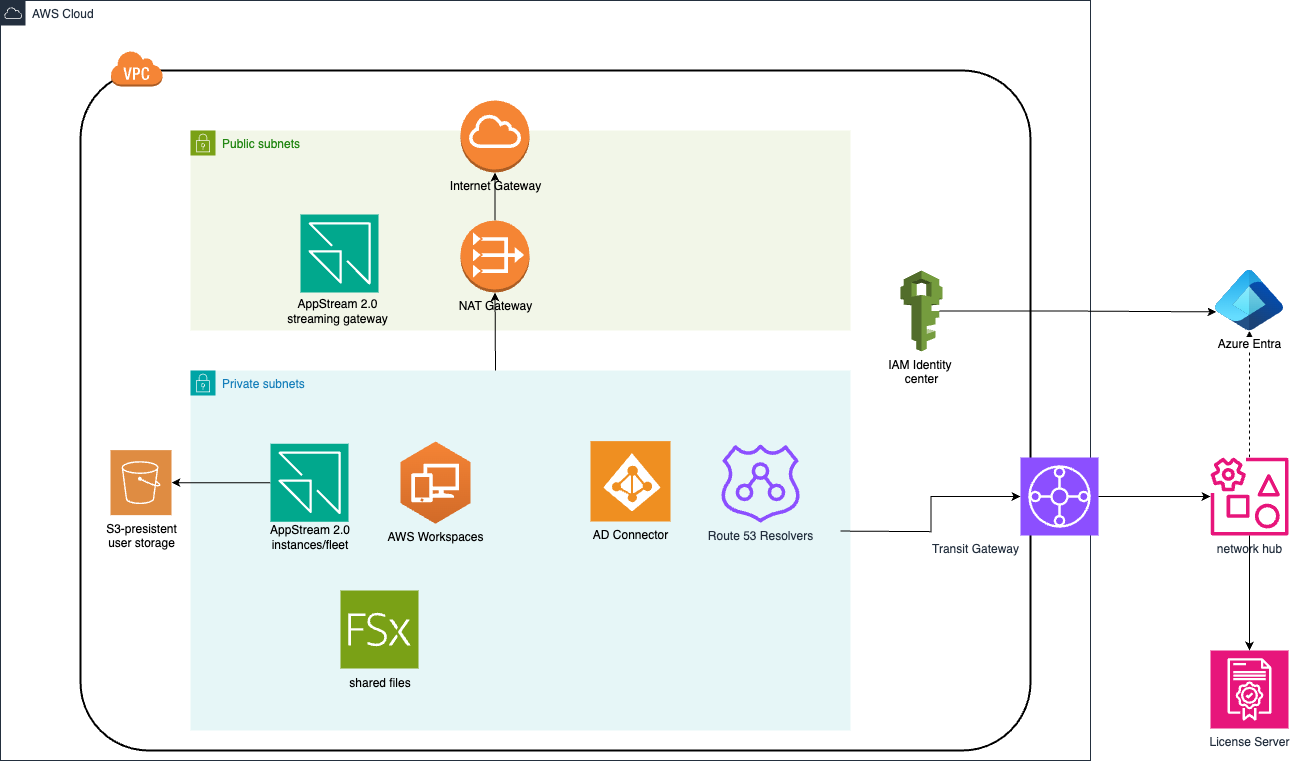
Lead Solution Architect
In today’s modern workplace, reliable and scalable remote desktop solutions are critical for productivity and operational efficiency. Legacy systems, often associated with high costs and maintenance challenges, may fail to meet the evolving demands of businesses.
For an enterprise customer in the engineering sector, we recently conducted a comprehensive evaluation of AWS-native solutions to replace a traditional remote desktop setup. The results were impressive.
This blog highlights key insights and takeaways from a proof of concept (PoC) evaluating Amazon Workspaces and Amazon AppStream 2.0.
Why legacy systems struggle
Traditional remote desktop solutions face several key challenges:
- Complex maintenance: Manual updates and configurations contribute to an increase in operational overhead.
- Performance bottlenecks: Suboptimal user experiences during peak times hinder productivity.
- High costs: Licensing and infrastructure expenses, coupled with scalability limitations, can put a strain on budgets.
These challenges underscore the importance of adopting scalable, cost-efficient, and user-friendly alternatives.
AWS solution overview
AWS provides two cloud-native services designed for end-user computing: Amazon Workspaces and Amazon AppStream 2.0, each tailored to address specific use cases.
Amazon Workspaces
Key features:
- Fully managed, persistent virtual desktops
- GPU-enabled instances for high-performance applications like CAD tools
- Seamless integration with existing IT infrastructure
Advantages:
- Ideal for users requiring personalized environments and a desktop operating system
- Enhanced data security with centralized management
Considerations:
- Limited snapshot flexibility
- Rebuild and restore operations require careful execution
Amazon AppStream 2.0
Key features:
- Non-persistent, browser-based application streaming (but supporting home directory backed by S3)
- High scalability, enabling optimized resource utilization
- Secure data streaming with no local data storage
Advantages:
- Simplified management for administrators
- Accessibility from any device, improving user mobility
- More cost-effective than Workspaces
Considerations:
- Time-consuming update of golden images
- Desktop operating systems like Windows 11 not supported (only Windows Server and Linux)
PoC insights
The PoC was designed to evaluate critical engineering applications, focusing on performance, scalability, and integration capabilities of both solutions.
The architecture developed during the PoC is as follows:
Key outcomes include:
- Improved user experience: Both services provided low-latency performance, even for compute-intensive applications.
- Seamless integration: Both solutions integrated well with existing infrastructure, including identity management (Active Directory integration), storage, and licensing systems.
- Scalability and cost efficiency: Amazon AppStream 2.0 proved to be more suitable for general use, while Workspaces was ideal for users requiring persistent desktops.
A balanced approach
The results suggest a hybrid strategy:
- Primary use case: Amazon AppStream 2.0 for users who need lightweight, application-specific access.
- Specialized use case: Amazon Workspaces for users with more persistent desktop requirements.
Moving forward
Implementing these solutions requires strategic planning and phased deployment to ensure minimal disruption. Key steps include piloting relevant applications, conducting detailed cost modeling and analysis, and preparing for a smooth migration process.
AWS-native solutions like AppStream 2.0 and Workspaces demonstrate how cloud technology can address the limitations of legacy systems, offering enhanced performance, cost savings, and future-proof scalability.
These articles might interest you

- Blog

- Blog

- Blog

